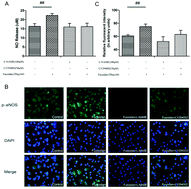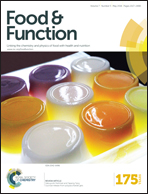Fucoidan from Undaria pinnatifida prevents vascular dysfunction through PI3K/Akt/eNOS-dependent mechanisms in the l-NAME-induced hypertensive rat model
Abstract
Despite major scientific advances in its prevention, treatment and care, hypertension remains a serious condition that might lead to long-term complications such as heart disease and stroke. The great majority of forms of hypertension eventually result from an increased vasomotor tone activity that is regulated by endothelial NOS (eNOS) in vascular endothelium. Here, we examined the effect of fucoidan on eNOS activation in human umbilical vein endothelial cells (HUVECs). We also examined the effects of functional components of Undaria pinnatifida fucoidan on blood pressure and vascular function in eNOS inhibition-induced hypertensive rats in vivo. Our results suggest that fucoidan increased nitric oxide production by activating eNOS and Akt phosphorylation, which could be impaired by Akt or eNOS inhibitors. In the hypertensive rat model, treatment of fucoidan resulted in potent and persistent reduction of high blood pressure (BP) even after drug withdrawal. Our results showed that the mechanisms might involve protection against vascular structure damage, enhanced endothelium-independent vascular function and inhibition of abnormal proliferation of smooth muscle cells, which are mediated by the Akt–eNOS signaling pathway. Moreover, fucoidan treatment reduced the vascular inflammation and oxidative stress control caused by iNOS expression. Together, these results support a putative role of fucoidan in hypertension prevention and treatment.


 Please wait while we load your content...
Please wait while we load your content...